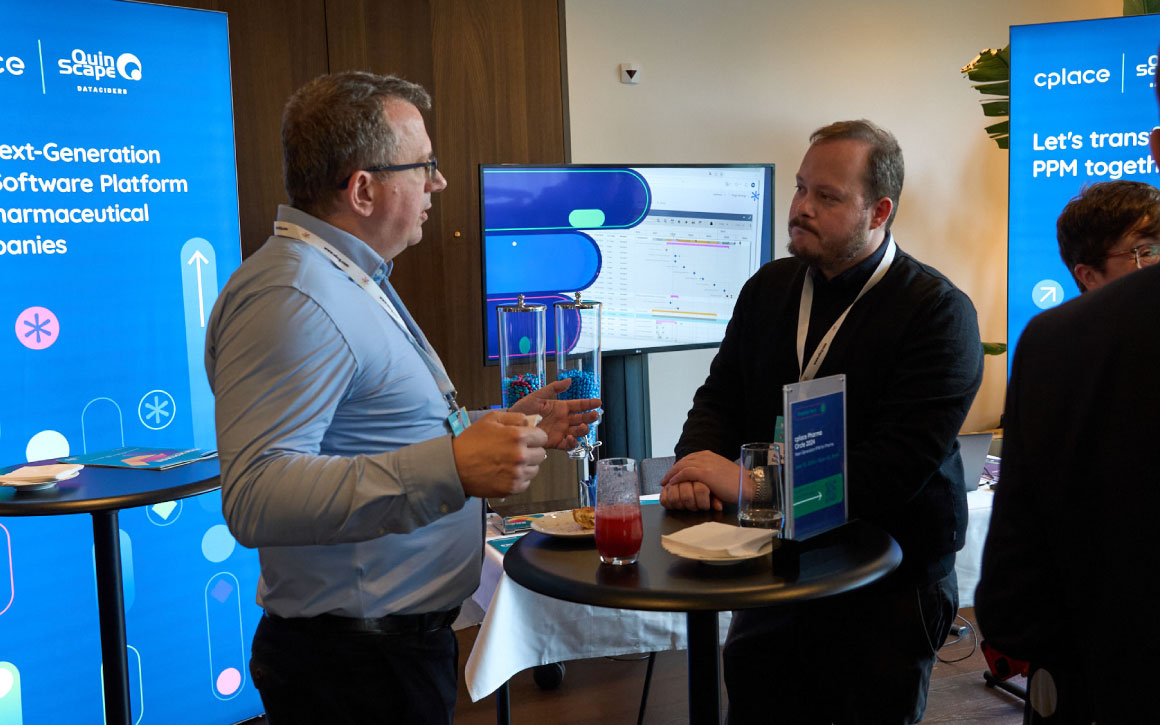Empowerment in the Workplace: Guidelines for Building a Successful Citizen Development Framework
April 21, 2024 | 6 min
Have you ever heard of Citizen Development or Low-Code and would like to find out how you can become successful as an organization? Do you want to avoid “shadow IT” and duplication of work and take the right steps from the outset? In this blog post, our partner Tiba Managementberatung provides tips on how to set up a successful Citizen Development framework.

First, we would like to give a brief overview of what Citizen Development is and who can benefit from it. Basically, Citizen Development is intended to enable employees who do not have in-depth programming skills to develop their own digital solutions using Low-Code/No-Code apps. By integrating Citizen Development into the business strategy, companies can make their processes more efficient and react more quickly to changing market requirements.
Does this mean that every employee should become a “Citizen Developer”? The answer is no. Citizen Development is an option for people who are interested in developing their own solutions and want to use the necessary tools and resources to do so.
Challenges without a Framework or Underlying Governance
Citizen Development offers efficient and innovative solutions to respond to the multitude of challenges in modern business areas. Nevertheless, a certain degree of control is essential from a corporate perspective, even if Citizen Development thrives on innovation and a certain degree of freedom for individual employees. If the organization does not create sufficient framework conditions that allow for effective management, this can have consequences. They are to be understood in detail as a form of shadow IT and are particularly questionable in the case of business-critical solutions:
- Security risks: If employees use Low-Code tools that are not monitored by the IT department, the applications developed could have security vulnerabilities. This can lead to data loss, data breaches and other security problems, possibly with legal consequences.
- Lack of quality control: If Low-Code solutions are used for critical business processes that are not monitored and controlled, this can lead to a lack of control over the company’s data and processes. This can lead to errors, inconsistencies, and other problems.
- Personal knowledge: If the knowledge is only anchored in individual employees and, for example, there is no documentation of the application (processes, data sources, responsibilities, etc.), this leads to devastating consequences, especially for business-critical solutions. If the person responsible is not available, the entire process can come to a standstill.
- “Duplication of work” and lack of synergies: There is a lack of transparency due to a lack of control and non-existent central requirements for documentation and approval processes. Divisions and departments do not coordinate, which promotes data silos. In practice, it can often be observed that similar topics are processed separately in different areas and no synergies can be achieved. This can lead to different data statuses and consequently to gaps in reporting.

Tiba Citizen Development Framework: The Right Balance between Governance and Freedom
Tiba’s Citizen Development Framework offers an innovative approach to the challenges described above. Many companies do not have the time and resources to initiate a full-scale adoption project. With our framework, we try to find a practical and pragmatic balance between the interests of the company and those of the citizen developers. The key elements of our framework are described in detail below.
Governance
Establishment of a Center of Excellence (CoE):
A CoE serves as a central point for innovation and improvement and plays a crucial role in maintaining IT sovereignty and avoiding shadow IT. It breaks geographical and organizational barriers and unites like-minded people with similar business goals. This encourages the sharing of knowledge and successes while ensuring standards and consistency through governance. By establishing clear guidelines and processes, a consistent approach to developing solutions is ensured. This not only ensures quality assurance, but also facilitates the scaling and reproducibility of successful projects. The CoE can also provide support with technical issues, adherence to compliance guidelines or project implementation.
Documentation:
Careful project documentation is essential for tracking progress, success, knowledge transfer and the improvement of future projects. Standardized documentation serves as a guide for teams, stakeholders, and future Citizen Developers. It ensures the availability of important findings and supports the evaluation of project success and the effectiveness of Citizen Development by taking both qualitative and quantitative factors into account.
Maturity level and strategy:
Development of a maturity model to assess the status of Citizen Development and to define an individual growth and improvement strategy.
Security:
Introduction of governance that covers security policies, data protection regulations and compliance requirements. This includes setting up processes to review and approve apps to minimize security risks.
Roles and responsibilities:
Clear definition of roles and responsibilities within the Citizen Development process, including the role of the Power Platform Coach, the IT department, and the Citizen Developers.
Monitoring and controlling:
Use of monitoring tools to monitor the use and performance of solutions to ensure compliance with standards and enable continuous improvements.
Training, Community and Support
Central knowledge hub:
It serves as a central source of information for guidelines, resources, training materials and exchanges within the community. An introductory area offers new Citizen Developers an initial orientation. There is also an overview of available tools as well as basic concepts and techniques that are possible or necessary for the successful implementation of Citizen Development projects. This includes an introduction to Low-Code and No-Code platforms, an explanation of best practices and knowledge of how to integrate these new tools into existing business processes.
FAQs:
Typical questions from beginners are answered there, e.g. “What requirements should I have?”; “Is Citizen Development also something for professional developers?” etc.
First steps:
These are tutorials, crash courses on data sources, data quality, databases, terms, and principles as well as self-learning opportunities (selected learning paths and modules, YouTube channels, etc.). A practical “hands-on” approach is preferred, which should accelerate the learning curve and enable the direct application of the skills learned.
Implementation and best practices:
For advanced learners, there is content on learning resources and best practices. We also provide guidelines for implementation. In addition, we provide an application process for apps – it helps to determine whether official approval of the project is necessary. This section also repeats content learned, consolidates knowledge and initiates implementation. The starter kits are structured in such a way that even interested employees without in-depth technical knowledge can quickly find their way around and start developing their own solutions.
Citizen Developer Community:
A network of Citizen Developers from different specialist areas and levels of experience provides a platform for sharing experiences, success stories and best practices. Multipliers and champions within the community share their knowledge, inspire and promote a culture of continuous improvement and innovation. Regular meetings, workshops and projects support the learning and continuous development of the members, who are supported technically and organizationally by the resources provided.
Coaching:
Offer of specialized coaching sessions by experts who directly support and advise citizen developers in specific use cases.
Open consultation hours:
Establish regular consultation hours where employees have direct access to expert knowledge and practical support.

Development, Processes and Innovation
Sharing templates:
Access to a central platform that provides tools and ready-made templates to simplify the development process. This includes, for example, design templates that specify a certain standardized structure.
Innovation and idea management:
Implementation of an idea management system that enables the collection and evaluation of innovation proposals and encourages Citizen Developers to develop new solutions in collaboration with IT.
Application app:
Setting up an app for applying for business-critical solutions and citizen developer projects. Important information can be recorded and approvals by the CoE/IT can be facilitated and standardized, taking into account guidelines and governance policies.
App showcases, hackathons, lighthouse projects, success stories and use cases:
Presentation of inspiring success stories and practical application examples as a guide and motivation for other teams. They offer teams and creators the opportunity to present their creations, learn from each other and actively drive digital transformation forward.
Culture and Change Management
Identify an executive sponsor:
Choosing a dedicated executive sponsor is critical as adoption goes far beyond a pure technology project. An executive sponsor should communicate the strategic vision and priorities and lead by example by utilizing the platform in line with adoption goals.
Build up “champions”:
Identify and promote key people within your organization who act as role models and multipliers for Citizen Development.
Expect resistance:
Resistance to change is normal and should be addressed proactively. By uncovering resistance, you can show empathy, address objections and break down barriers. Open dialog and involving employees in the change process can help overcome resistance and ensure a successful introduction of Citizen Development.
Conclusion
Citizen Development will play a central role in the digitalization of companies in the future, as it offers new opportunities for productivity and competitiveness. The Tiba Citizen Development Framework supports companies by enabling employees to develop their own solutions. The framework is a flexible basis for current and future transformation in Citizen Development, combined with advanced technologies. We encourage dialog about the potential of Citizen Development and the Tiba Framework to explore individual solutions and implementation strategies.
About the Author
Iven Timmermann, Senior Digital Consultant, Tiba Managementberatung
Tiba Managementberatung specializes in transformation, agility, project, process and change management. With over 30 years of experience, we provide holistic consulting and training based on the success factors of people & mindset, organization & culture, processes & methods and technology & tools.
Homepage of Tiba Managementberatung


